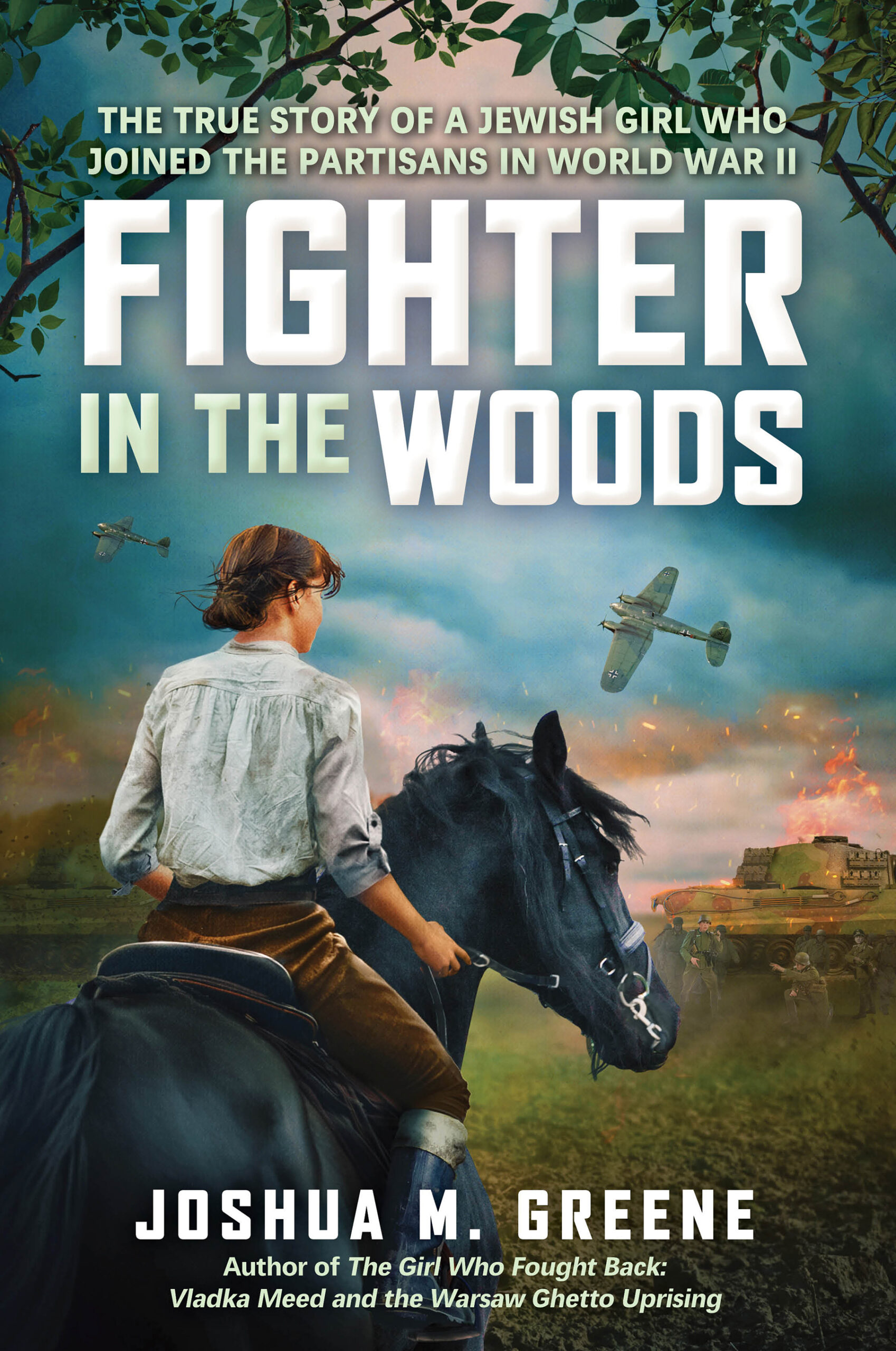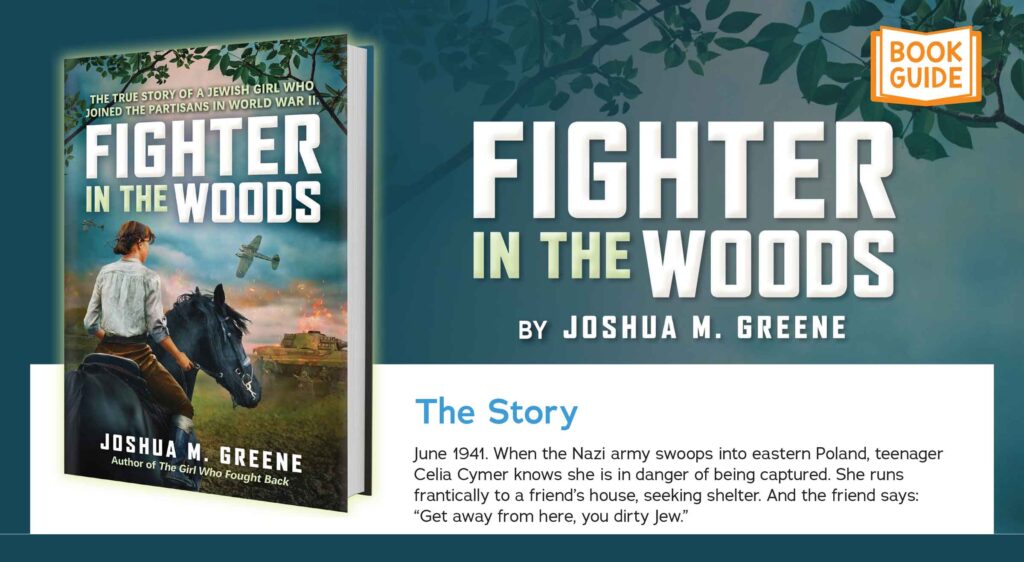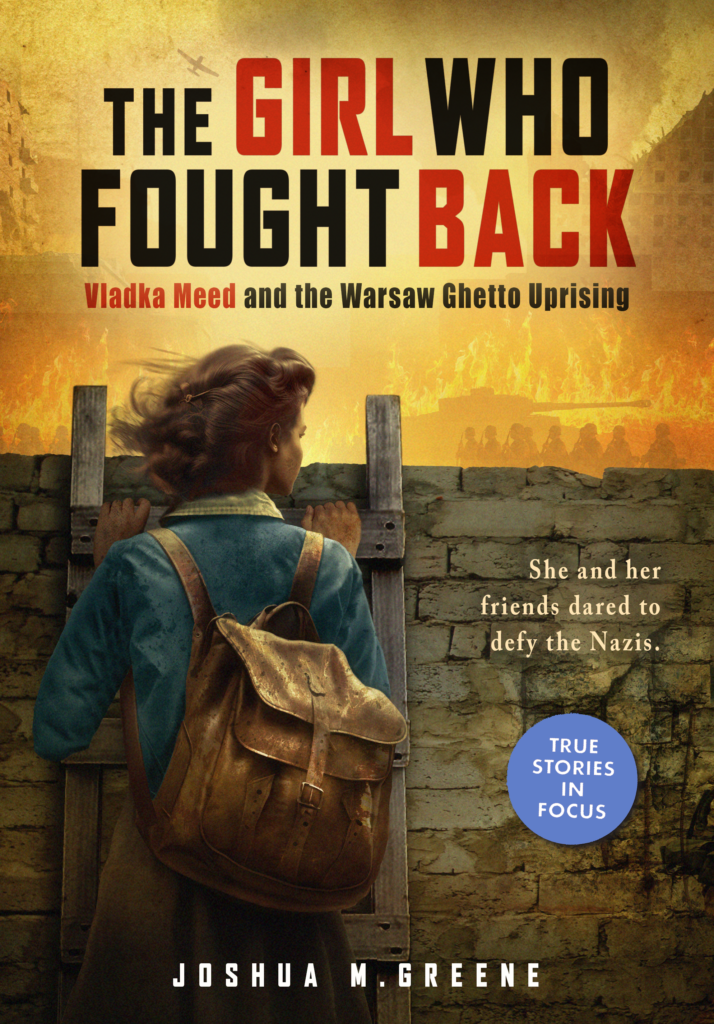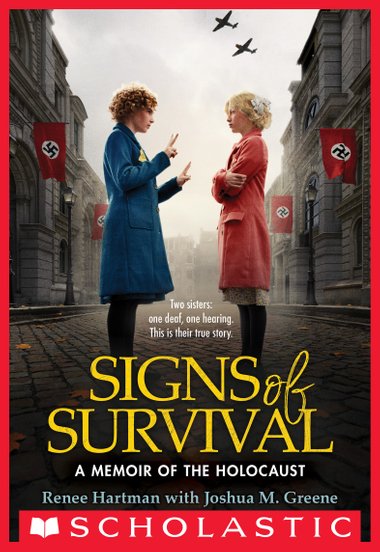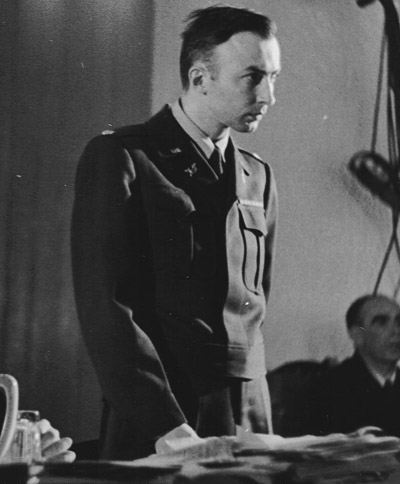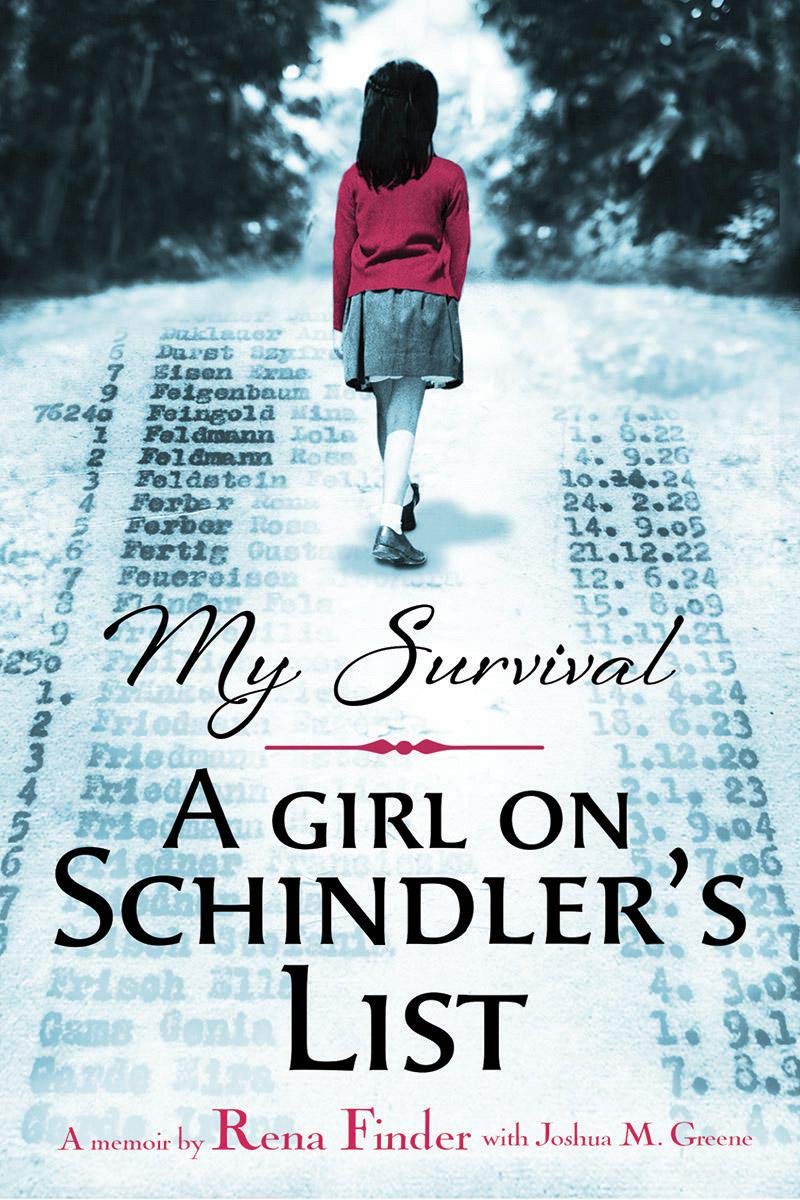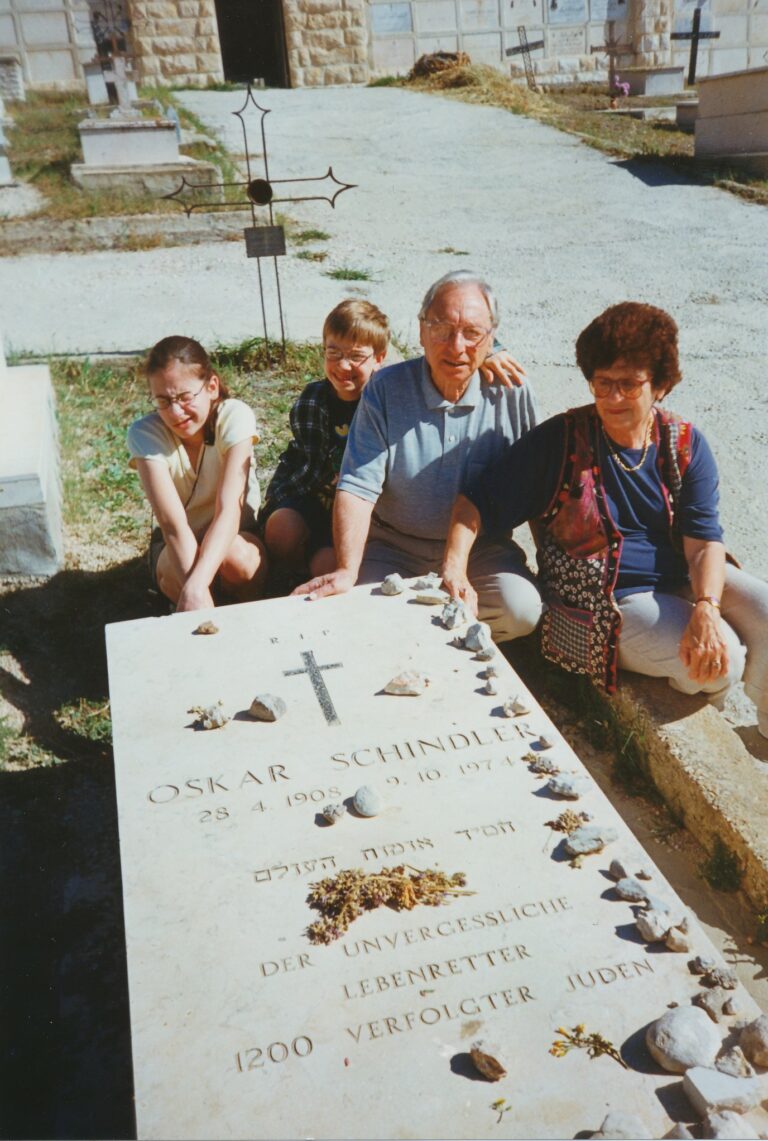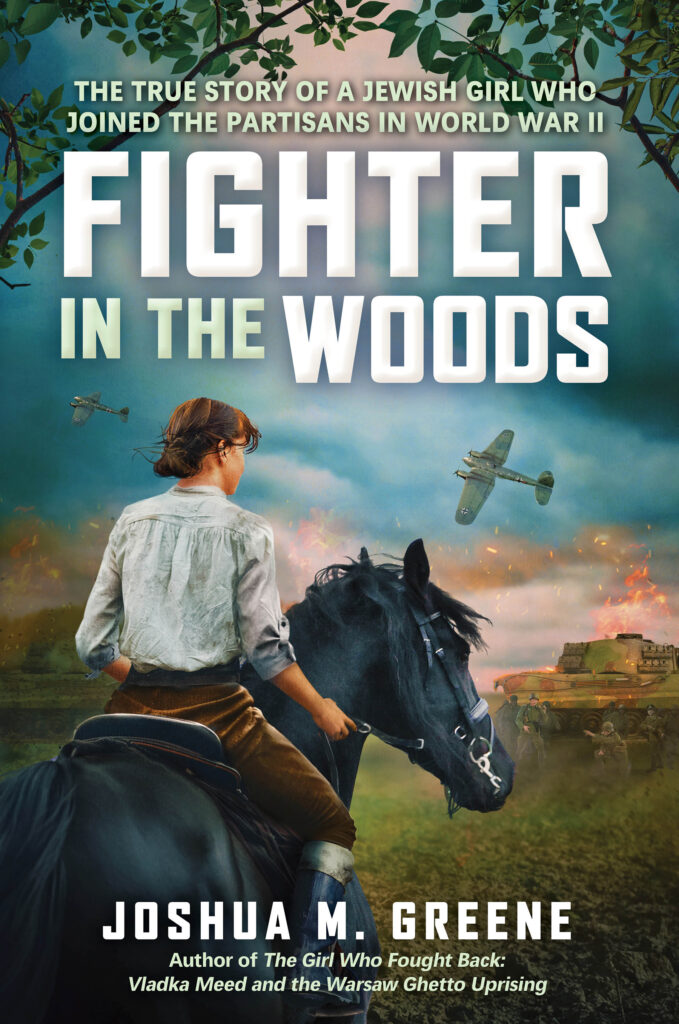
Share this page
Fighter In The Woods
The True story of a jewish girl
who joined the partisans in world war II
On a warm night in August 1943, while the rest of Poland slept, a teenager named Celia Cimmer climbed onto a stocky horse with a long shaggy mane. She cinched the strap of her rifle across her chest and tightened her grip on the horse’s reins, preparing for a tough ride.
Celia was part of a team of twenty-eight young men and one other teenage girl, all riding their own horses. These young people had escaped from the Nazis and become partisans, a secret group that fought back from hiding places in woods and dense forests. In a schoolyard several miles to the east, Nazi soldiers had stored a pile of ammunition. The partisans’ mission tonight was to destroy it.
Celia and her comrades quietly walked their horses through stands of trees and thick underbrush. When the schoolyard was in sight, they brought their horses to a stop. In the middle of the schoolyard, silhouetted against the starlit sky, were boxes of dynamite, barrels of gunpowder, cans of gasoline, belts of bullets, and other weapons stacked up in a tall pile. At the far end of the yard stood an abandoned schoolhouse. Celia could hear German voices coming from inside—men talking and laughing.
The partisans didn’t have much time to do their job. Silently, the team crept into the concrete yard and pulled their horses up in front of the pile of weapons. Celia and the other teenage girl stood guard with their rifles pointed toward the schoolhouse. Several of the young men jumped off their horses, lit gasoline-soaked rags, and threw them onto the pile of weapons. The men jumped back on their horses and rode out of the yard at a gallop. Celia and the other girl followed close behind.
Seconds later, the pile of ammunition exploded with a deafening Boom! It was a roaring, ear-splitting explosion, as though a bolt of lightning had hit the schoolyard. The air stung with the smell of burning gasoline, and bullets popped in the stockpile like strings of firecrackers. Celia’s horse was nearest to the explosion, and he flinched at the sound. The horse reared up on his hind legs, Celia’s rifle got tangled in the reins, and she fell to the ground. Her horse galloped off. Celia turned to see Nazi soldiers running out of the schoolhouse, yelling at the partisans and firing their weapons. Two of the soldiers lit flares and tossed them forward. The schoolyard burst into light. Celia was lying on the ground, exposed and alone. No rifle. No horse.
The soldiers took aim.
WATCH
THE TRAILER
The true story of a Jewish girl who joined the partisans in World War II.
